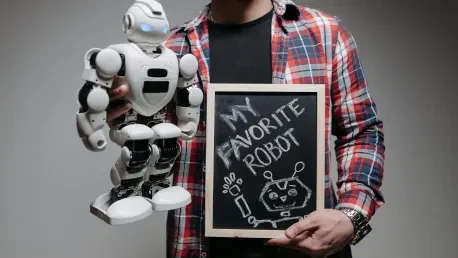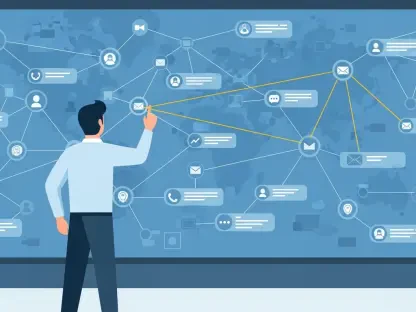In a world increasingly shaped by artificial intelligence, the question of whether machines can truly replicate the depth and originality of human creativity has sparked intense discussion, particularly within the design community. A recent thematic talk hosted by the Malta Digital Innovation Authority in Birkirkara brought this debate to the forefront, gathering a diverse group of artists, researchers, and entrepreneurs to explore AI’s role in creative industries. Moderated by Bernard Montebello, the event was organized under the designMT initiative by the Malta Crafts Foundation, with support from European partners. Panelists shared insights on how AI tools are transforming workflows, while also grappling with the fundamental concern of whether technology could ever match the emotional resonance and authenticity of human artistry. This dialogue not only highlighted practical applications of AI but also underscored a deeper philosophical inquiry into the essence of creativity itself, setting the stage for a nuanced exploration of technology’s place in design.
Exploring AI’s Potential and Limits in Design
The discussion in Birkirkara revealed a spectrum of experiences with AI tools among the panelists, which included digital artist Etienne Farrell, textile artist Kristina Austi, entrepreneur David Sciberras, artist/illustrator Zach Ritchie, and AI researcher Dr. Dylan Seychell. Early interactions with AI often proved disappointing, with outputs lacking relevance or depth, such as when Austi sought assistance for weaving and received unrelated embroidery images. However, recent advancements have shifted perceptions significantly. Sciberras and Ritchie pointed out how AI now excels in prototyping and experimenting with ideas, slashing costs and time in the process. Despite these strides, a shared view emerged that AI tends to recycle existing data rather than pioneer truly innovative concepts. This limitation suggests that while AI can serve as a powerful aid in the creative process, it falls short of generating groundbreaking insights on its own, raising questions about its capacity to rival human imagination in design fields.
Beyond the technical capabilities, the panelists delved into the practical benefits and inherent constraints of AI as a design tool. Dr. Seychell categorized AI’s utility into reshaping data, simulating scenarios, and fostering creative collaboration, but emphasized that it remains a tool for engagement rather than a cure-all solution. Farrell and Austi shared how initial skepticism gave way to appreciation for AI’s ability to streamline repetitive tasks, yet they remained firm on its inability to capture the soul of artistry. Ritchie highlighted a potential backlash, predicting a renewed appreciation for handmade works as a counter to AI’s polished outputs. This perspective points to a broader tension in the industry: while AI can enhance efficiency and democratize access to creative resources, its outputs often lack the unique imperfections and personal narratives that define human-made designs, reinforcing the notion that technology is best positioned as a supportive partner rather than a standalone creator.
The Irreplaceable Essence of Human Artistry
A resounding theme from the panel was the unmatched value of human creativity, rooted in emotional connection and authentic storytelling. Farrell emphasized how her work and teaching thrive on genuine human interaction, a quality AI cannot replicate. Austi echoed this sentiment, noting the timeless appeal of personal narratives in art, a view supported by younger generations who still crave authenticity. Sciberras added that AI struggles to emulate the sensory richness of physical craftsmanship, where touch and texture play pivotal roles. These insights collectively underscore a critical distinction: while AI can mimic patterns and styles, it lacks the lived experience and emotional depth that infuse human creations with meaning. This discussion highlighted a persistent belief that creativity is not merely about output but about the human journey behind it, a dimension technology cannot fully grasp or reproduce in its current state.
Further reinforcing this stance, Ritchie envisioned a “new renaissance” where society rekindles its love for handmade, authentic pieces as a response to AI’s growing presence. Dr. Seychell cautioned against over-reliance on technology, reminding attendees that AI is engineered for interaction, not independent ingenuity. Montebello also brought attention to regulatory efforts, noting Malta’s alignment with the EU’s AI Act to safeguard originality and protect intellectual property in AI-assisted works. Audience contributions enriched this dialogue, suggesting that the value of art often lies in its flaws—a distinctly human trait that machines cannot authentically replicate. This convergence of opinions paints a picture of cautious integration, where AI can augment creative processes but must remain subordinate to the human spirit, ensuring that the quirks and stories of humanity continue to define artistic expression in an increasingly digital landscape.
Navigating Originality and Intellectual Property
One of the more pressing concerns raised during the event was the issue of originality in AI-generated content and the associated challenges of intellectual property. Montebello pointed out that as AI tools become more integrated into design, questions of ownership and authenticity grow more complex. Malta, in step with broader European initiatives, is actively developing frameworks to address these concerns, ensuring that creators and users are protected under evolving regulations. The panelists agreed that while AI can produce visually impressive results, the lack of a personal creative process behind these outputs often diminishes their perceived value. This sparked a broader conversation about how to balance technological innovation with the need to preserve the integrity of original work, a challenge that remains unresolved but critical to the future of design in a digital era.
Adding to this, audience perspectives shed light on the cultural implications of AI in creativity, with many arguing that art’s worth is tied to its human imperfections rather than machine precision. Dr. Seychell referenced philosophical insights, invoking Immanuel Kant’s notion of the “crooked timber of humanity” to illustrate that true beauty lies in flaws and individuality—qualities AI cannot authentically embody. The panel consensus leaned toward a future where AI acts as a collaborator, accelerating processes and opening new avenues for exploration, but never fully displacing the need for human input. This discussion underscored the importance of establishing clear guidelines and ethical standards to navigate the murky waters of AI-assisted creation, ensuring that technology enhances rather than undermines the originality and personal touch that define artistic endeavors.
Reflecting on a Balanced Future for Design
Looking back on the event in Birkirkara, the dialogue among Malta’s design community painted a thoughtful picture of AI’s role in creativity. The panelists and attendees alike grappled with the practical advantages of AI, from streamlining workflows to broadening access to tools, while wrestling with its inability to mirror human depth. Moving forward, the focus should be on fostering a symbiotic relationship between technology and tradition, where AI serves as an enabler rather than a replacement. Establishing robust ethical guidelines and continuing to prioritize human connection in art will be crucial steps. As the industry evolves, designers and policymakers must collaborate to ensure that the unique imperfections and stories of humanity remain at the heart of creation, guiding AI’s integration in a way that amplifies rather than overshadows the creative spirit.









